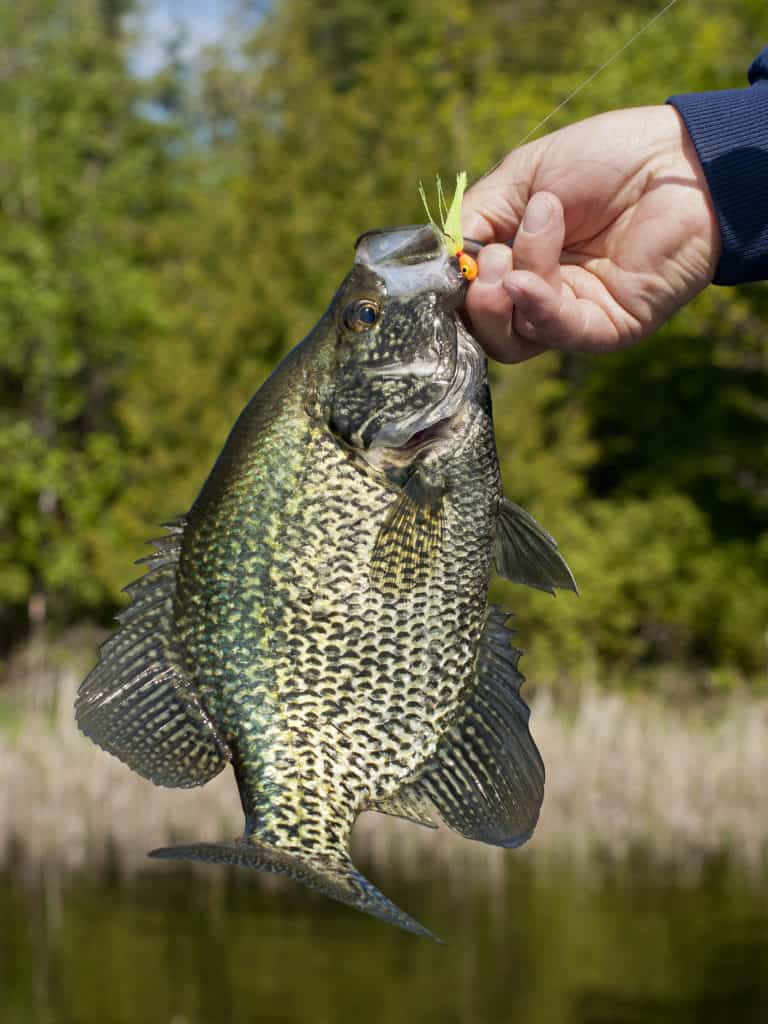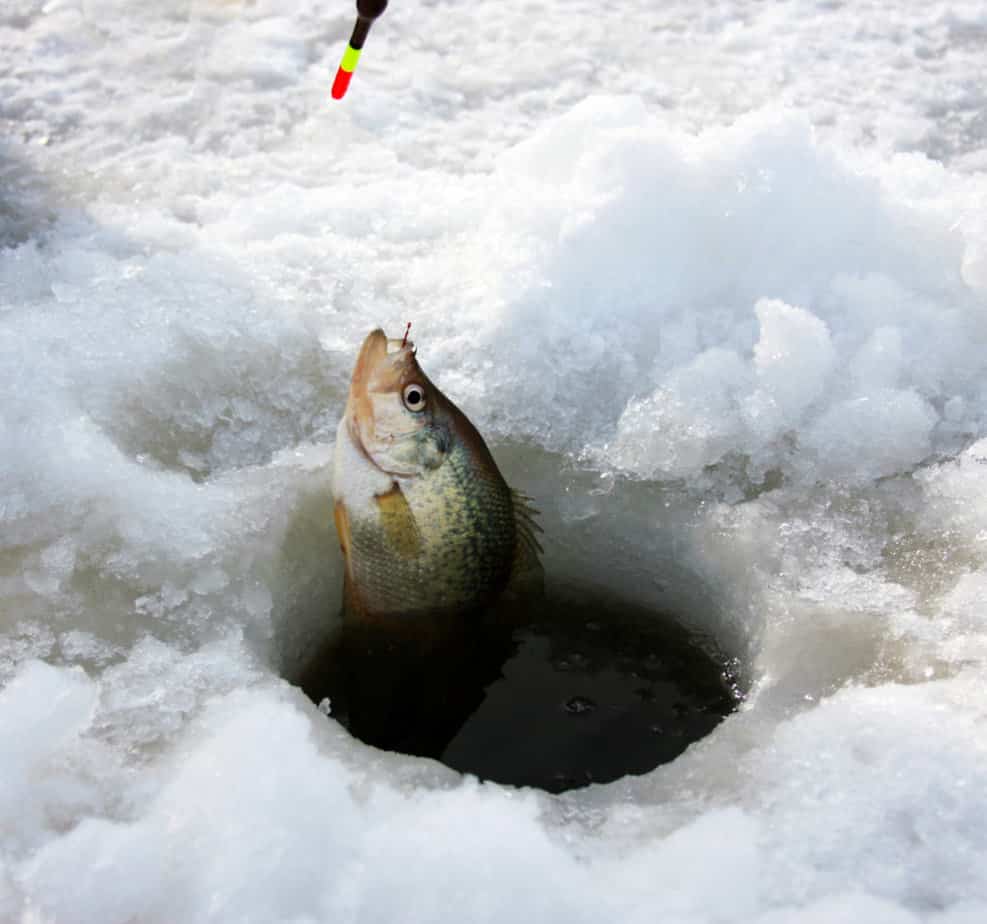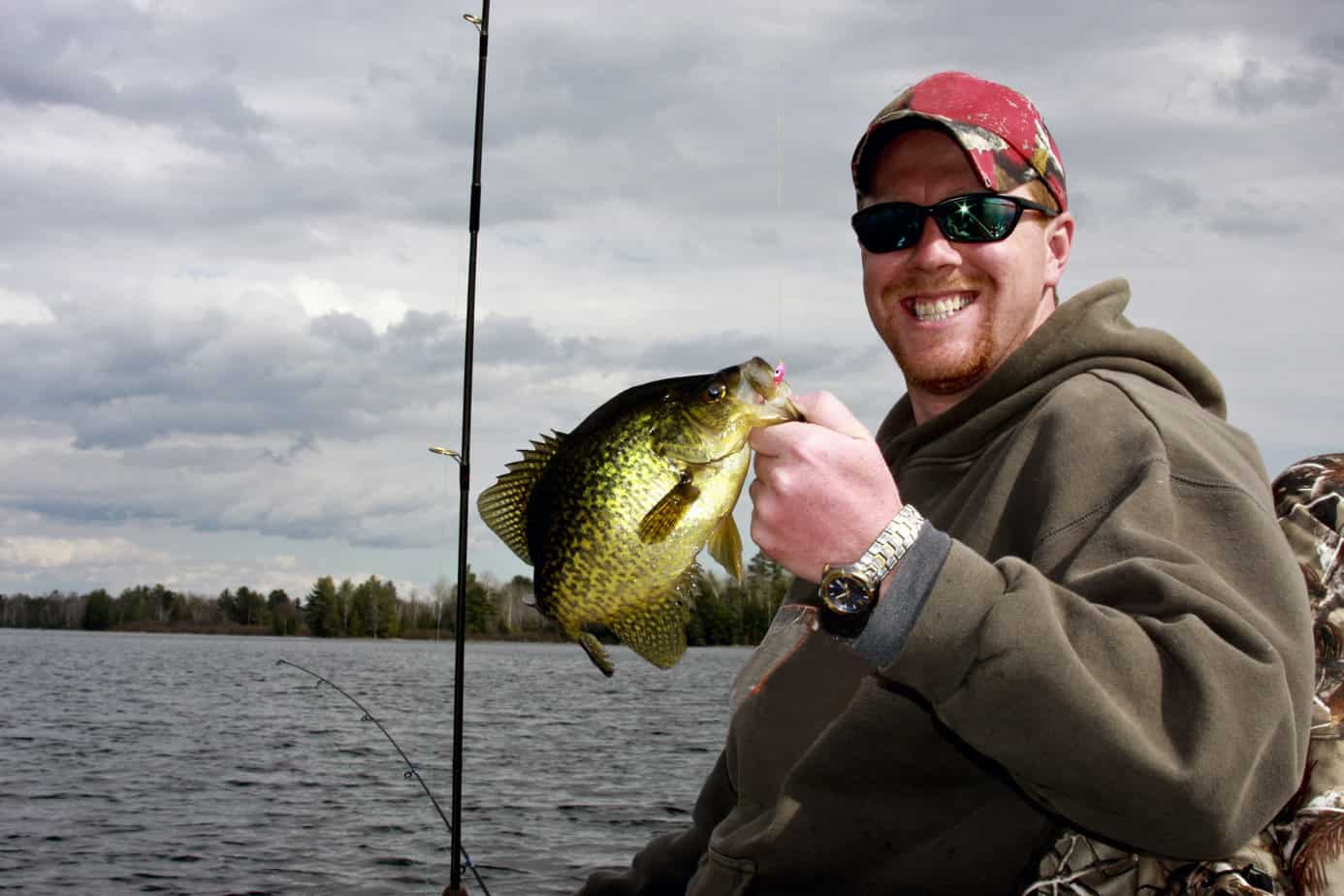Fishing for crappie can be an exciting and rewarding hobby, but it’s important to understand the best water temperature for success.
Knowing the ideal water temperatures that are most conducive to catching these fish is essential if you want a successful fishing trip.
But how do you determine what those conditions should be?
In this blog post, we’ll explore understanding water temperature as well as some tips on finding the right temp range for your next crappie fishing outing.
We’ll also discuss techniques and tricks to maximize your chances of landing more of these tasty freshwater fish in different temperatures.
So whether you’re looking for answers about when and where to find crappie or just trying to improve your catch rate, join us as we dive into “best water temp for crappie fishing”.
Understanding Water Temperature
Water temperature is a measure of the amount of heat in the water.
It can range from near-freezing temperatures to boiling hot, depending on the environment and conditions.
Water temperature affects many aspects of fishing, including where fish will be found, what type of bait they’ll bite on, and how active they’ll be.
What is Water Temperature?
Water temperature is measured in degrees Fahrenheit (°F) or Celsius (°C).
The average water temperature for most lakes and rivers ranges between 40-80°F (4-27°C).
When it comes to fishing, understanding the current water temperature can help you determine which species are likely to be present in an area as well as their activity level.
Warmer waters tend to attract more fish than colder ones because warmer temperatures provide more oxygen for them to breathe.
How Does Water Temperature Affect Fishing?
The effects of water temperature on fishing vary depending on the species being targeted.
Colder waters tend to produce slower bites since cold-blooded creatures like fish become sluggish when exposed to lower temperatures.
Warmer waters can cause some species such as bass or trout to have variable activity due to increased metabolism rates caused by higher temperatures.
In addition, certain types of bait may work better at different temperatures; for example, worms may work best when fished in cooler waters while minnows perform better in warmer environments.
Factors That Influence Water Temperature
Key Takeaway: Water temperature is an important factor when it comes to fishing, as it can affect the activity level and location of different species. Factors that influence water temperature include air temperature, wind speed, and sunlight exposure. Knowing the current water temperature can help you determine which type of bait to use and where fish are likely to be found.
Ideal Water Temperatures for Crappie Fishing
Crappie fishing is a popular pastime for many anglers. Knowing the ideal water temperatures for crappie fishing can help you catch more fish and have a successful outing.
Spring and Summer Temperatures: During the spring and summer months, crappies prefer water temperatures between 65°F to 75°F.
The optimal temperature range will vary depending on the location of your lake or river, as well as other factors such as depth and vegetation cover.
In general, look for areas with warmer surface waters that are slightly cooler than what’s found in deeper parts of the body of water.
This could be an area near shore where there is less wind or wave action cooling off the surface waters compared to open-water areas further away from shorelines.
Techniques for Finding the Right Water Temperature for Crappie Fishing
One way to measure water temperature is by using a thermometer.
These are available in many sizes and shapes and can easily be attached to your line or bait container.
Simply lower it into the water until it reaches the desired depth and read off the temperature displayed on its face.
This method will give you an accurate reading of what temperatures are present at different depths throughout the day.
Another technique for finding optimal temperatures is observing fish behavior as an indicator of when they’re most active.
If you notice that certain species of fish seem to be more active during certain times of the day or under certain conditions, this could indicate that those conditions are ideal for catching them.
For example, if you see crappie swimming near surface areas during sunrise or sunset, this could mean that these periods offer warmer waters which attract them more than other times do.
Finally, another way to find out what temperatures work best for crappie fishing is by talking with local anglers who have experience in your area’s waters and inquiring about their preferred methods and results from various water temperatures over time.
They may even have specific tips on how best to target particular species based on their own experiences in similar situations previously.
Lastly, you may have some success checking online sources that report water temperature for your local bodies of water.
Tips for Successful Crappie Fishing in Different Water Temperatures

Colder Waters (Below 60°F). When fishing in colder waters, it is important to remember that crappie will be less active and therefore harder to catch.
To increase your chances of success, try using smaller lures or baits such as jigs and minnows.
You may also want to slow down your presentation by casting further away from the shoreline and retrieving more slowly.
Additionally, look for deeper water areas where the temperature is slightly warmer than other spots on the lake or river.
In warmer waters, crappie become much more active which makes them easier to catch.
Try using larger lures such as crankbaits or spinnerbaits with a faster retrieve rate since they are more likely to attract fish in these conditions.
It is also important to focus on shallow areas near structures like weeds, logs, rocks, and docks since this is where crappie tend to congregate when it is warm outside.
Finally, do not forget about trolling if you have access to a boat; this can be an effective way of covering large amounts of water quickly while still being able to keep an eye out for any signs of activity from fish below the surface.
Conclusion
Summary of Key Points: Water temperature is an important factor to consider when it comes to crappie fishing. Colder waters (below 60°F) require different techniques than warmer waters (above 70°F). A thermometer can be used to measure water temperature, and observing fish behavior can also help indicate optimal temperatures.
Crappie fishing requires knowledge and skill in order to have a successful outing.
Understanding the effects of water temperature on fish behavior is essential for success, as different temperatures require different techniques.
With the right tools and knowledge, anglers will be able to find the perfect spot for their next crappie fishing adventure.
FAQs in Relation to Best Water Temp for Crappie Fishing
What temperature are crappie most active?
Crappie are most active in temperatures between 65 and 75 degrees Fahrenheit.
They tend to be more active during the day when the water is warmer, but they can also be found at night in cooler waters.
During spawning season, crappie become even more active as they search for mates and food sources.
Crappie can also become less active in colder temperatures below 60 degrees Fahrenheit or higher than 80 degrees Fahrenheit.
What time of day is best for crappie fishing?
The best time of day for crappie fishing depends on the season and water temperature.
Generally, early morning or late evening is the most productive time to fish as these times provide cooler temperatures and more cover from sunlight.
During summer months, when water temperatures are higher, midday can be a good option as well.
It’s important to pay attention to weather conditions such as wind speed and direction which can affect where you should target your fishing efforts.
With patience and knowledge of the area you’re fishing in, you’ll have success catching crappie no matter what time of day it is.
How cold is too cold for crappie fishing?

The optimal temperature for crappie fishing is between 55-65°F.
When temperatures dip below this range, the activity of crappie slows down significantly and they become less likely to bite.
In cold weather conditions (below 40°F), some say it is best to avoid fishing for crappie altogether as their metabolism has slowed so much that they are unlikely to be active enough to feed.
Colder temperatures also make it difficult for anglers due to the uncomfortable conditions and lack of fish activity.
However, crappie can still be caught and if you’re an avid fisherman…get after it.
How do you catch crappie in 50-degree water?
To catch crappie in 50-degree water, the best approach is to use a slow presentation with small jigs or live bait.
Start by fishing deeper areas of the lake where there are likely to be more active fish. Use a light line and keep your lure close to the bottom for better results.
Move slowly and methodically around structures such as logs, rocks, and weeds while keeping an eye out for any signs of activity.
Experiment with different colors of lures until you find one that works best in the given conditions.
Patience is key when trying to catch crappie in cold water – it may take some time before you get a bite.
Conclusion
In conclusion, understanding water temperature is key to successful crappie fishing.
Knowing the ideal water temperatures for crappie fishing and using techniques to find the right temperature can help anglers get the most out of their time on the lake or river.
With a few tips in mind, such as keeping an eye on weather patterns and monitoring baitfish activity, anglers can maximize their chances of catching crappies at any given best water temp for crappie fishing.

